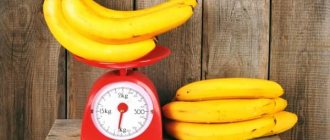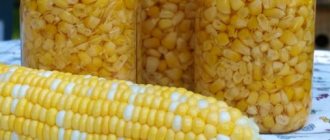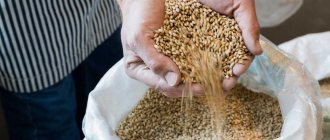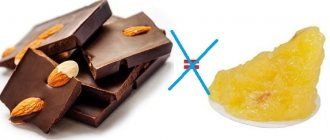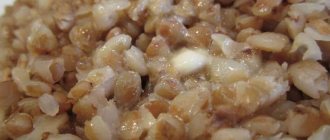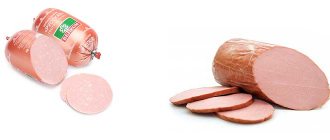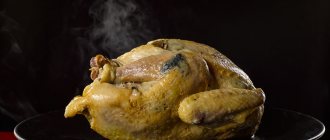What is corn
Despite the fact that the cultivation of corn began 7 thousand years ago by the inhabitants of Latin America (Mayans, Aztecs, Incas), it came to Europe only in the 16th century and even later to Asia and Africa. At the turn of the 17th-18th centuries, the inhabitants of Hungary and Romania learned about corn, who immediately dubbed this plant “yellow flasks”.
Content:
- What is corn
- The nutritional value
- Effect on the body
- Top useful properties
- Some Caveats
- How to choose the right one
- Areas of use
- Corn in folk medicine
- Corn in cooking
Corn is a herbaceous, erect annual plant that grows up to 2-4 m. There is an assumption that it is the oldest cereal plant on the planet [1]. Modern corn differs significantly from its wild ancestor in both color and higher yield. Interestingly, it is impossible to find wild corn in nature today. Instead, biologists know many varieties of modern crops, and not all of them have the usual yellow color. Today, breeders know white, red and even blue corn. Depending on the purpose, nine main groups of this culture are distinguished: siliceous, sugar, tooth-like, starchy, waxy and others [1]. The ideal conditions for growing corn are subtropical climates, although they also grow well in temperate latitudes.
BZHU corn porridge
The energy and nutritional value of porridge depends on how it is cooked: with milk or water. Below are the indicators of the KBZHU of this dish:
| Type of corn porridge | Number of calories (Kcal) and % of the prescribed norm | Squirrels | Fats | Carbohydrates |
| Grams and % Daily Value | ||||
| On the water | 89, 5 (5, 83 %) | 2, 3 (2, 5 %) | 0, 3 (0, 45 %) | 19, 4 (13, 86 %) |
| With milk (2.5% fat) | 101, 5 (6, 62 %) | 3, 7 (4, 02 %) | 3, 4 (5, 07 %) | 13, 9 (9, 93 %) |
We recommend that you familiarize yourself with the BJU of jelly
It should be noted that the calorie content, as well as the nutritional value of corn porridge cooked in milk or water, will depend on the percentage of fat content of the milk and the presence of other ingredients.
The nutritional value
Corn is an extremely rich source of nutrients. These golden grains supply the body with vitamin C, folic acid, and niacin. In addition, they contain vitamins A, , E, . The kernels of this cereal consist of 72% carbohydrates, 14% protein, and another 14% of the composition is fat [2]. Corn also contains magnesium, calcium, selenium, zinc, potassium, iron, phosphorus, copper, and iodine. And by the yellow color of the vegetable, you can determine that it is rich in carotenoids, such as zeaxanthin and lutein.
The table below shows the nutrient content per 100 g of raw product [2].
| Calorie content | 86 kcal |
| Squirrels | 3.27 g |
| Carbohydrates | 16.767 g |
| Fats | 1.35 g |
| Cellulose | 2 g |
| Ash | 0.62 g |
| Water | 76 g |
| Vitamin A | 9 mcg |
| Thiamine (B1) | 0.16 mg |
| Riboflavin (B2) | 0.06 mg |
| Pantothenic acid (B5) | 0.7 mg |
| Pyridoxine (B6) | 0.09 mg |
| Folic acid (B9) | 42 mcg |
| Vitamin E | 0.07 mg |
| Vitamin PP | 1.8 mg |
| Choline (B4) | 23 mg |
| Calcium | 2 mg |
| Sodium | 15 mg |
| Magnesium | 37 mg |
| Phosphorus | 89 mg |
| Potassium | 270 mg |
| Sulfur | 33 mg |
| Iron | 0.52 mg |
| Manganese | 0.2 mg |
| Zinc | 0.46 mg |
| Copper | 54 mcg |
| Selenium | 0.6 mcg |
BZHU and KBZHU corn per 100 grams
The balance of proteins, lipids, carbohydrates, as well as caloric content depend on the method of eating the product. Below is the energy value, as well as the nutritional value of corn in fresh or boiled, canned form, as well as dishes prepared from this cereal.
Canned and fresh
KBJU of raw corn in the amount of 100 grams has the following indicators:
- calorie content – 101 Kcal (6.58%);
- proteins – 3.5 g (3.81%);
- carbohydrates – 15.6 g (11.14%);
- fats – 2.8 g (4.2%).
When eating fresh corn, the body receives beneficial substances:
- vitamin B 5 (14.3%), which is necessary for the metabolism of proteins, lipids, carbohydrates, cholesterol, for the production of a number of hormones, hemoglobin, for the absorption of amino acids, sugars in the intestines, and maintaining the proper functioning of the adrenal cortex;
- Phosphorus is a macroelement needed to maintain the balance of acids and alkalis, as well as accelerate energy metabolism, normalize the functions of the brain, musculoskeletal system, heart, and blood vessels.
But when canning, the indicators of BZHU and KBZHU of the product will change - this depends on the manufacturer, the type of cereal, and the ingredients used in production. Therefore, the indicators of KBZHU per hundred-gram portion may differ:
We recommend that you familiarize yourself with the BJU of potatoes
| Manufacturer | Number of calories (Kcal) and % of daily value | Squirrels | Fats | Carbohydrates |
| Grams and % Daily Value | ||||
| "Globus | 58 (3, 78 %) | 2, 9 (3, 15 %) | 0, 6 (0, 9 %) | 9, 9 (7, 07 %) |
| "Bonduelle" | 57, 8 (3, 77 %) | 2, 9 (3, 15 %) | 0, 61 (0, 9 %) | 9, 92 (7, 07 %) |
| "6 acres" | 50 (3, 26 %) | 2 (2, 17 %) | 0 (0%) | 11 (7, 86 %) |
| Heinz | 50 (3, 26 %) | 2 (2, 17 %) | 0 (0%) | 11 (7, 86 %) |
| "O'green" | 50 (3, 26 %) | 2, 2 (2, 39 %) | 0 (0 %) | 11, 2 (8 %) |
From the data in the table it can be seen that the most high-calorie products are canned food “Bonduelle”, “Globe”, and they contain less carbohydrates, but contain a small percentage of fat. Also, the CBJU of canned corn is affected by the presence or absence of sugar.
Boiled
If you boil corn, the body will receive 108 Kcal per 100 grams of product, that is, 7.04% of the daily requirement. This serving of boiled corn contains 3.2 g (3.48%) protein; 2.8 g (4.18%) fat; 14.9 g (10.64%) carbohydrates.
The energy and nutritional value of corn cooked on the cob will be completely different. The calorie content of such a product will increase to 123 Kcal per 100-gram serving, or 8.02% of the daily requirement. BZHU indicators will also increase:
| Organic matter | Grams | % of daily value |
| Squirrels | 4, 11 | 4, 46 |
| Fats | 2, 32 | 3, 43 |
| Carbohydrates | 22, 51 | 16, 07 |
Corn prepared in this way contains useful substances:
- Vitamin B 6 (11.2%) – adermin – ensures the metabolism of tryptophan, fats and nucleic acids, the formation of red blood cells; participates in the transformation of amino acids; regulates the processes of inhibition and excitation in the central nervous system.
- Vitamin B1 (11.6%) - thiamine - is not synthesized by the body, comes from food; participates in all types of metabolism, supports the functioning of the neuromuscular system.
We recommend that you familiarize yourself with the BZHU of cognac
Effect on the body
Recently, corn has become especially popular due to the absence of gluten, one of the most powerful allergens.
In addition, this cereal is rich in vitamin E, which affects skin health, and the antioxidants present protect the eyes and reduce the risk of developing macular degeneration. At the same time, lutein contained in corn grains is useful not only for people with poor eyesight, but also for pregnant women. Regular consumption of this vegetable has a beneficial effect on fetal development. Selenium makes corn a powerful anti-tumor product, as well as a natural medicine for those with impaired kidney function. These yellow grains are good for the liver and also help prevent the accumulation of excess cholesterol. The water in which corn was cooked is recommended to be taken as a remedy against urinary incontinence and chronic cystitis.
Top useful properties
Improves digestion
Just one cup of corn kernels contains almost a fifth of your daily fiber requirement [2]. And this substance is important for the successful prevention of diseases of the digestive system, especially the intestines, as well as their treatment. Regular consumption of fiber protects against hemorrhoids, irritable bowel syndrome, and diverticulosis. This component promotes faster removal of waste products from the body. In addition, it stimulates the secretion of digestive juices, which is also important for proper digestion of food.
Source of vitamins and minerals
Corn is rich in B vitamins, particularly thiamine and niacin. Thiamine is necessary for adequate functioning of the nervous system. Niacin deficiency can lead to pellagra (a disease characterized by diarrhea, dementia, and symptoms common to some dermatological problems). In addition, corn is a rich source of pantothenic acid, which is responsible for the proper metabolism of carbohydrates, fats and proteins. Folic acid deficiency in pregnant women can cause serious harm to the fetus. Corn can provide most of the daily requirement of the substance, as well as vitamin E, a natural antioxidant that not only slows down aging, but also improves resistance to various diseases. Vitamin A contained in corn is important for maintaining healthy eyes and skin, stimulates the activity of the immune system and, as a powerful antioxidant, protects against free radicals.
At the same time, corn contains minerals that are valuable for the body, such as phosphorus, manganese, magnesium, zinc, iron, and copper. This vegetable will easily increase your selenium reserves. Phosphorus, which is part of the chemical composition of these golden grains, is important for the proper development of bones and also contributes to the proper functioning of the kidneys. Magnesium is significant as a mineral that maintains normal heart rhythm and affects bone density.
Anti-cancer agent
Corn is a rich source of antioxidants needed to fight free radicals. The latter, in turn, according to scientists, cause cancer. Unlike other vegetables, corn does not lose its beneficial properties after heat treatment. This may sound paradoxical, but, for example, boiled corn is even healthier and richer in nutrients than raw corn.
In addition, the vegetable contains phenolic compounds, in particular ferulic acid, which, as scientific studies have shown, has antitumor activity and prevents breast and colon cancer [3][4].
Heart Defender
Corn oil prevents atherosclerosis and corrects the level of “bad” cholesterol [5]. The result of such activity is the protection of the cardiovascular system from many diseases. Incorporating corn oil into your diet is the best way to protect your heart and provide your body with healthy omega-3 fatty acids. Moreover, there is reason to consider corn as a vegetable that regulates blood pressure. It reduces the risk of heart attack and stroke.
Natural cure for anemia
Being a source of folic acid (B9), this cereal can prevent anemia. It contains iron, which is necessary for the production of red blood cells. Deficiency of this element is one of the most common causes of anemia.
Helper for diabetics
Corn is beneficial for people with type 2 diabetes because it contains phytosterols, which regulate the production and absorption of insulin and prevent hypo- and hyperglycemia. Taken together, this effect has a very beneficial effect on the general health of patients.
Is it possible to eat boiled corn while losing weight?
Nutritionists recommend that those losing weight include boiled ears of young corn in their daily diet . The product contains a lot of plant fiber, which, like a sponge, cleanses the digestive tract of waste and toxins and quickly removes excess fluid from the body. Manganese and B vitamins lower cholesterol levels, which improves digestion and helps regulate weight.
Weight loss also occurs due to the normalization of metabolic processes and activation of fat breakdown. Plant fiber saturates quickly and for a long time, the vitamin-mineral complex increases work capacity and physical activity, which leads to additional calorie burning.
Corn grains act as a mild natural laxative : they enhance intestinal motility, soften the consistency of stool, stimulate bowel movements, and reduce the time of bowel movement.
Advice. To increase the effectiveness of weight loss, it is recommended to take a tincture made from corn silk. The drink reduces appetite, reduces blood glucose levels, and increases the amount of urine excreted. To make the tincture, pour 200 g of dry stigmas into a thermos, pour in 500 ml of boiling water and leave for 4-5 hours. Take 100 ml half an hour before meals.
Corn Diet! Is it possible to lose weight quickly on corn? Easy and comfortable
Consumption standards
The permissible amount of cereal depends on age, health status and the presence of concomitant diseases . On average, a healthy person is allowed to eat 150 g of grains per day (this is one average ear). In the presence of risk factors, during breastfeeding and pregnancy, for children and the elderly, the norm is reduced to 2-3 ears per week.
It is better to eat corn at lunch , then it is well and completely absorbed by the body and does not cause a feeling of discomfort and heaviness in the stomach in the evening.
Combination with other products
Additionally, it is allowed to include almost all non-starchy vegetables in the diet (asparagus, cucumber, sweet peppers, onions, garlic, assorted greens, lettuce), unsweetened fruits, and low-calorie dairy products.
Boiled corn goes well with low-fat meats, fish, and other vegetables, steamed, oven-baked, or grilled without adding vegetable or cooking fats. Boiled corn grains can be used as an ingredient in a diet salad, served with an omelet, or added to soup.
Some Caveats
Ripe corn contains a lot of fatty acids. For this reason, it is not advisable for people prone to heart disease to overuse vegetables, or especially corn oil. Recently, fructose obtained from corn, which is used as a raw material for sweeteners, has become popular. Meanwhile, surrogates in the form of corn syrup have a very detrimental effect on health: they cause obesity and sharp jumps in glucose in the bloodstream.
Like most grains, corn grains contain phytic acid, which makes it difficult for the body to absorb minerals such as iron and zinc [6]. This is usually not a problem, especially if you have a balanced menu with regular consumption of meat. But in countries where corn is a daily staple, phytic acid can become a serious problem. Soaking the corn before eating will help slightly reduce the content of this substance in the vegetable.
And one more disappointing fact. Corn is a vegetable that is most often grown from genetically modified seeds. And this is also important to know.
Daily culture consumption rate
Many types of diets are based on a daily reduction in the standard amount of calories to 1500–1800 kcal and below. Each of them has its own rules, for example, main meals can be the most high-calorie, and snacks can be light and low-calorie, like a boiled ear of corn.
The daily norm for an adult is up to 150-200 g of boiled corn grains. This is about an average-sized cob - 1 piece. It is better to use the product before lunch, do not leave it for the evening. Children under 10 years old can consume 80 g of grains per day. It is not recommended to do this every day: the optimal amount is no more than 3 times a week.
Please note: Both adults and children are not recommended to overuse boiled cereal. And this applies not only to those people who monitor their weight and try to adhere to diet rules. Excessive amounts of grains contribute to flatulence and various digestive problems.
Boiled corn is a filling, tasty and healthy delicacy. It is considered a low-calorie product, so it can be used in creating a diet menu for weight loss. The main thing is not to forget about the daily norm and strictly follow it.
How to choose the right one
This vegetable appears on markets in the second half of summer. When choosing corn, it is better to give preference to the cobs, wrapped in green leaves, with shiny and still fresh “hair”. The lighter the grains, the younger, and therefore juicier and tastier the corn. The most delicious vegetable is the one with light yellow grains. It is important that there are no dark spots or mold on the head of cabbage [7].
Corn in folk medicine
In folk medicine of different countries, corn occupies a place of honor. But for treatment, it is most often not whole heads of cabbage that are used, but stigmas. They are believed to have diuretic, choleretic and hemostatic properties [8]. In addition, infusions of corn “hair” are used to accelerate blood clotting, dissolve kidney stones, and treat various liver diseases. External use of infusions helps get rid of various skin diseases, rashes, and bruises. Not only traditional healers, but also certified therapists prescribe herbal medicines from corn to their patients to treat cholecystitis, hepatitis, inflammation of the biliary tract, and cystitis.
A universal recipe for stigma infusion
To prepare a medicinal corn infusion, you will need a glass of boiling water, which you need to pour about 10 g of stigmas. Cover and wrap the container with the infusion. Leave for at least an hour. Take the finished medicine 1 tbsp. l. before meals three times a day.
Infusion for the treatment of the liver
This remedy is prepared from corn silk and rose hips, taken in equal proportions. Pour boiling water over two tablespoons of the mixture (you will need about a glass) and, wrapping it up, leave for at least two hours. Take 1/3 cup three times a day after meals. You can improve the taste of the drink by adding a little honey.
Decoction for treating weakened hair
Weak, thin, dull hair can be restored by rinsing it with a decoction of corn silk. To enhance the effect, you can take corn raw material and nettle in equal proportions.
